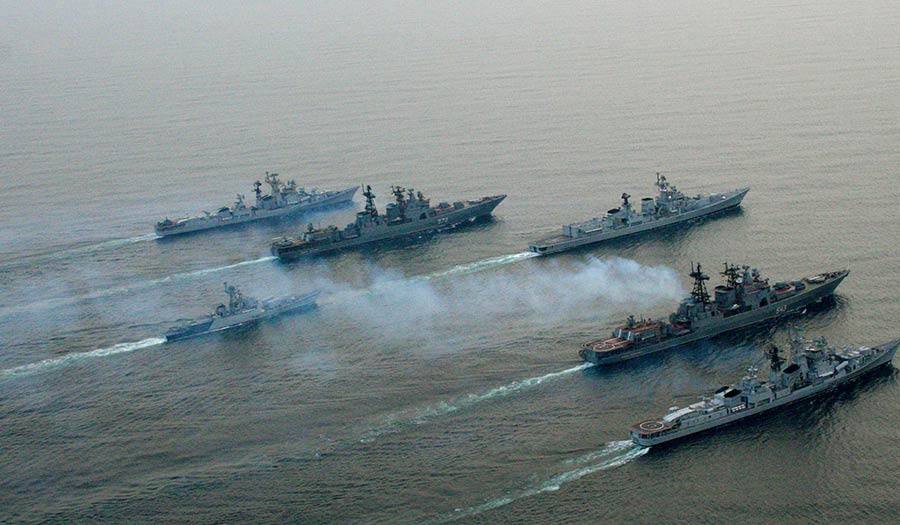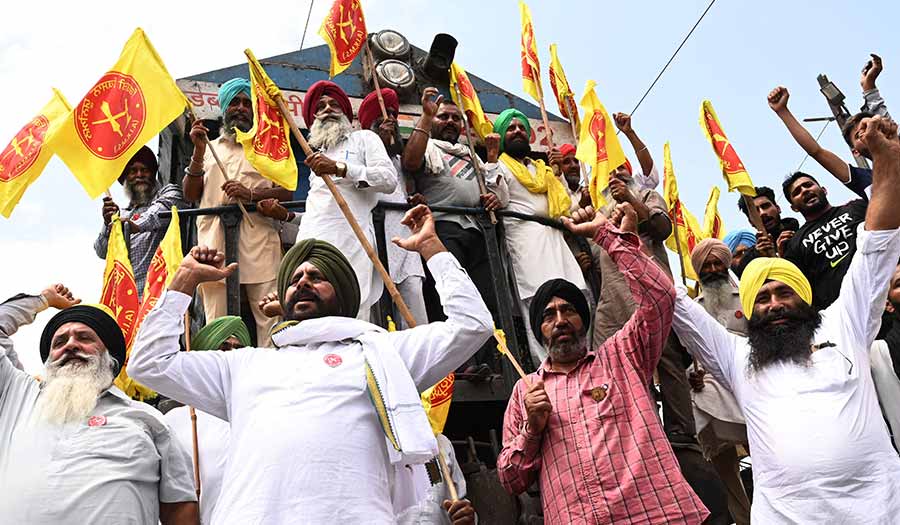 AP
AP
World News Desk
Learn the why behind the headlines.
Subscribe to the Real Truth for FREE news and analysis.
Subscribe NowNEW DELHI (AP) – Prime Minister Narendra Modi’s visit to Washington in June was expected to reduce India’s dependence on Moscow for arms, economic ties and technology as New Delhi and Washington try to strengthen the Quad partnership, which also includes Japan and Australia, to contain growing aggression from China.
India considers Russia a time-tested ally from the Cold War era with key cooperation in defense, oil, nuclear energy and space exploration. But the partnership has become complicated as Moscow builds closer ties with India’s main rival, China, in part because of the war against Ukraine.
Here is where things stand with India-Russia ties.
How Did India Develop Ties with Russia?
India started building a strong relationship with the then-Soviet Union in the mid-1950s during the Cold War, then strengthened those ties over conflicts with Pakistan.
The Soviet Union helped mediate a cease-fire between India and Pakistan to end the 1965 war over control of the disputed Himalayan territory of Kashmir. Then, during India’s war with Pakistan in December 1971, the Soviet Union used its veto power to support India at the United Nations, while the U.S. ordered a task force into the Bay of Bengal in support of Pakistan.
India and the Soviet Union signed a treaty of peace, friendship and cooperation in August 1971. Following the dissolution of the Soviet Union, it was replaced by the Treaty of Indo-Russian Friendship and Cooperation in January 1993.
What Is India’s Stance on Russia’s War on Ukraine?
India has so far avoided voting against Russia or criticizing Russian President Vladimir Putin since the invasion of Ukraine began in February 2022.
Facing pressure from the United States and European nations, Prime Minister Narendra Modi told Mr. Putin in September, “Today’s era is not an era of war.” He said democracy, diplomacy and dialogue had kept the world together.
Mr. Modi and Mr. Putin met in September on the sidelines of a meeting of the Shanghai Cooperation Organization summit in the city of Samarkand, in Uzbekistan.
Is India Dependent on Russian Arms?
India started looking for Soviet arms after its bloody war with China in 1962.
In the early 1990s, the USSR represented about 70 percent of Indian army weapons, 80 percent of its air force systems and 85 percent of its navy platforms.
India bought its first aircraft carrier, INS Vikramaditya, from Russia in 2004. The carrier had served in the former Soviet Union and later in the Russian Navy.
India’s air force presently operates more than 410 Soviet and Russian fighters, comprising a mix of imported and license-built platforms. India’s inventory of Russian-made military equipment also includes submarines, tanks, helicopters, submarines, frigates and missiles.
India has been reducing its dependency on Russian arms and diversifying its defense procurements, buying more from countries like the U.S., Israel, France and Italy. But experts say it may take 20 years to get over its dependence on Russian supplies and spares.
How Much Russian Oil Is India Buying?
After Russia invaded Ukraine, the United States and European nations set a cap of $60 a barrel for Russian oil to control Moscow’s rising revenue. India’s oil purchases from Russia have risen sharply despite the sanctions.
Indian officials have defended buying oil from Russia, saying the lower price benefits Indian consumers.
Russian oil now accounts for nearly 20 percent of India’s annual crude imports, up from just 2 percent in 2021, according to Indian media reports.
European Union Foreign Policy Chief Josep Borrell recently suggested that the EU should take a harder line on India reselling Russian oil into Europe as refined fuel. India says its understanding of the EU regulations is that Russian crude, if substantially transformed in a third country, is not treated as Russian anymore.
How Are India’s Ties with the U.S. and Europe?
India, with the world’s second-largest army, fourth-largest air force and seventh-largest navy, is trying to develop into a defense manufacturing hub. But it lacks a strong industrial base for military equipment.
India has been acquiring new technologies and reducing reliance on imports.
Under President Donald Trump’s administration, the U.S. and India concluded defense deals worth over $3 billion. Bilateral defense trade increased from near-zero in 2008 to $15 billion in 2019, including long-range maritime patrol aircraft, missiles and drones.
U.S. Defense Secretary Lloyd Austin discussed upgrading the partnership with India during his visit to New Delhi in early June.
Joint production and manufacture of combat aircraft engines, infantry combat vehicles, howitzers and their precision ordnance were discussed in May at a meeting of the U.S.-India Defense Policy Group in Washington, and a decision is likely to be announced during Mr. Modi’s visit to Washington.
- Real Truth Magazine Articles
- ASIA
 The Rise of India
The Rise of India
More on Related Topics:
- Hamas and Fatah Agree to Form a Government. What Does It Mean and Who Are These Palestinian Groups?
- President Biden’s Withdrawal Injects Uncertainty into Foreign Policy Challenges
- What to Know About the NATO Military Alliance and How It Is Helping Ukraine
- With Niger Exit, U.S. Intelligence Dims on Growing West Africa Insurgencies
- Russia and North Korea Sign Partnership Deal That Appears to Be the Strongest Since the Cold War


